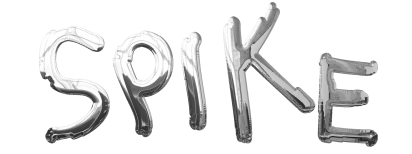At first glance, Pieter Schoolwerth’s (*1970) large-scale canvas Thinking Through 2014 (13 Years) – with its dynamic light-blue bands of color and a yellow, umbrella-like form – reads like an abstract painting. Only upon closer inspection does one realize that not only some of the thick impasto brushstrokes, but also the shadows, are printed rather than painted, its depth derived less from spontaneous gesture than from a precisely staged simulation of manual work – as if painting were watching itself paint.
When the internet emerged publicly in the 1990s, during his studies at CalArts, Schoolwerth began examining the digital disappearance and duplication of the body through videos, drawings, and installations. Since the 2000s, though, he has mainly been painting: scenes with deformed faces, falling somewhere between the signature of Francis Bacon and a poorly loaded avatar. In “Thinking Through (13 Years)” (all works 2025), little trace is to be found of these bodies. What remains is the gesture – embedded in a rule-based system of digital and analog processes, a “neo-neo-neo-conceptual painting” in which the artist’s hand itself becomes part of the algorithm.
Thinking Through 2018 (13 Years), 2025, oil, acrylic, and inkjet on canvas, 229 x 182 x 3.5 cm
Thinking Through 2022 (13 years), 2025, oil, acrylic, and inkjet on canvas, 183 x 154.5 x 3.5 cm
Thinking Through 2024 (13 Years), 2025, oil, acrylic, and inkjet print on canvas 183 x 156 x 3.5 cm
Spread spaciously across two galleries, what all eight large-scale works from his new series share is a dynamic brushstroke and a combination of thickly applied oils and acrylics with printed pigment. Each referring to a year of exhibition history at Kraupa-Tuskany Zeidler between 2012 and 2025, Schoolwerth has collaged together images of works by other artists sourced from the gallery’s website; thus, the pastel-green Thinking Through 2017 (13 Years) becomes an abstract remix of works by Anna Uddenberg, Guan Xiao, and Avery Singer. (Recognition is tricky, but the gallery provides a booklet with reproductions of the collages and work details – a source of amused “aha!” moments.) The colors change by year: 2019 was green, blue, flesh-toned; 2021, pink and yellow. In Thinking Through 2019 (13 Years), a figure finally appears – two interflowing heads taken from an untitled pastel drawing by Cathy Josefowitz.
Such pairship repeats in an installation in the center of each room, where white boxes reproduce the gallery in miniature, at 1:3 scale. They initially obstruct the view of the wall-hung works – until one notices, looking down into the 3D models, that inside these mini-galleries hang yet more oil paintings, like sketches or echoes of the large formats. Looking back and forth, one begins to wonder: Which is the original, which the copy – and how does the translation work? The exhibition space thus becomes a metaphor for the passage between analog and digital worlds, a disappearing act of not only physical experience, but time itself (requiring only the instantaneity of the click).
View of “Thinking Through (13 Years),” Kraupa-Tuskany Zeidler, Berlin, 2025. Photo: Andrea Rossetti
In fact, the small-format oil paintings in the mini-galleries turn out to be the first translations of the digital collages into painterly form. In our email conversation, Schoolwerth shared that, having devoted most of the past decade to digital compositions, what has brought him back to gestural painting of late are his children, aged two and four. “After fifteen seconds, my daughter gets bored, which forces spontaneity.” To scale the small paintings up, he photographed them and used CgFX software – a rendering tool used in game design – to turn them into 3D reliefs, then transferred them back onto canvas via inkjet print. Finally, he applied oil and acrylic paint by hand – to “put the paint back into the painting.” Thus, the paint in the larger works comes at the end of a carefully conceived process, functioning like a digital filter to amplify contrast. What emerges is an uncanny artifice, caught between the flat forms being pulled into the familiar image logic of video games and the re-compression of three-dimensionality onto the two-dimensional canvas.
Thirteen years of gallery history in remixed form might read like a favor to his dealers disguised as conceptual art, or a didactic study on archiving art in the digital age, or an ironic commentary on the exhibition as “content.” None of that is wrong; yet all are too narrow as views of such self-reflexive work. In his interplay of hand and code, what Schoolwerth shows here is that, as a medium, painting still needs the body; even when run through the digital meat grinder, it must rest on infrastructures of memory, labor, and material: ones stubbornly maintained by people, from the digital archive and transportation routes to the gallery itself. After excursions into the virtual and three-dimensional, Schoolwerth loops us back onto the flat plane: the canvas as the surface of a here and now in which he keeps painting alive and contemporary.
Thinking Through 2013 (13 Years), 2025, oil, acrylic, and inkjet on canvas, 137 x 181 x 3.5 cm
A Selection of Works Presented in 2013 (Thinking Through), 2025, oil on linen, 45.5 x 61.5 x 3 cm
Pieter Schoolwerth
“Thinking Through (13 Years)”
Kraupa-Tuskany Zeidler, Berlin
12 Sep 25 – 25 Oct 25








